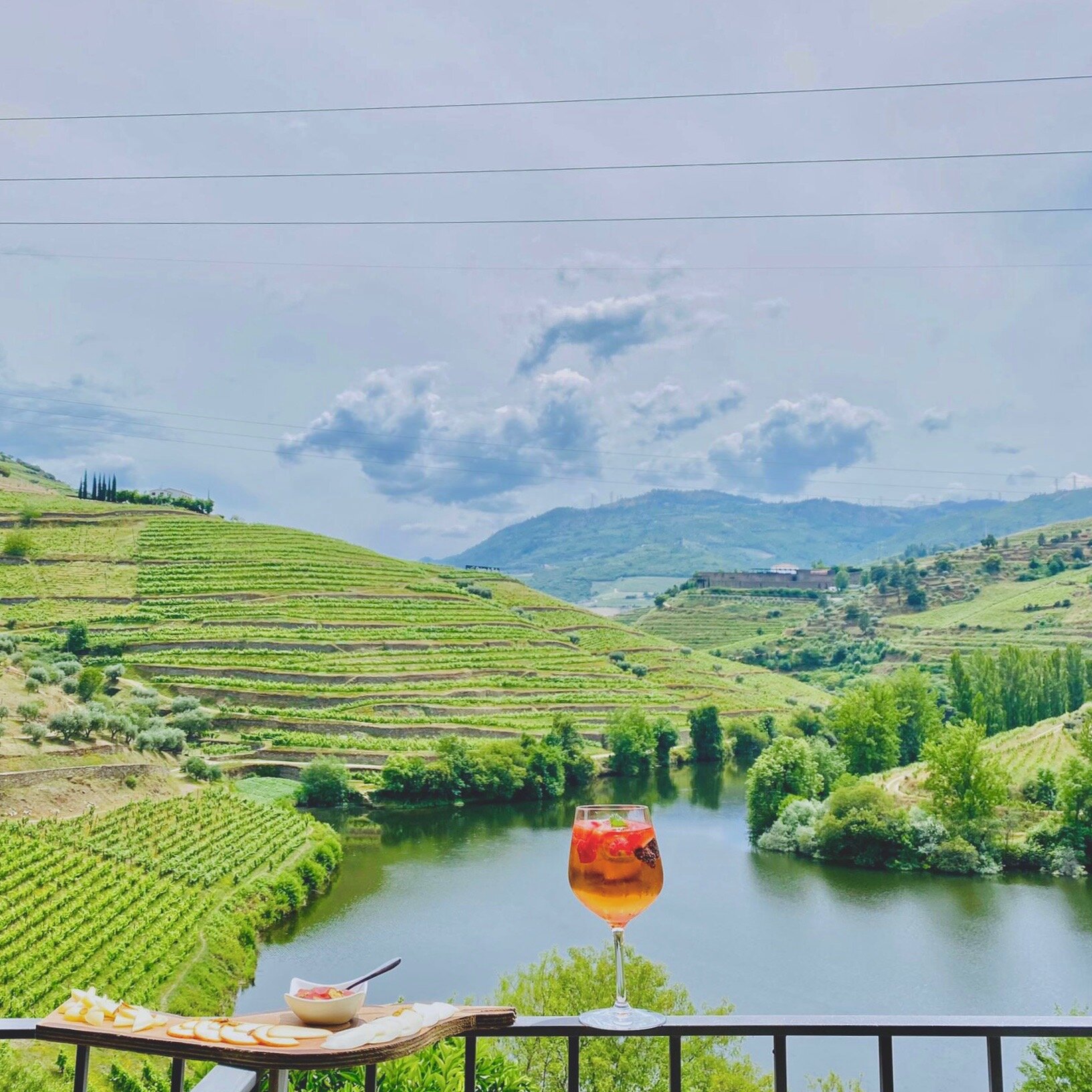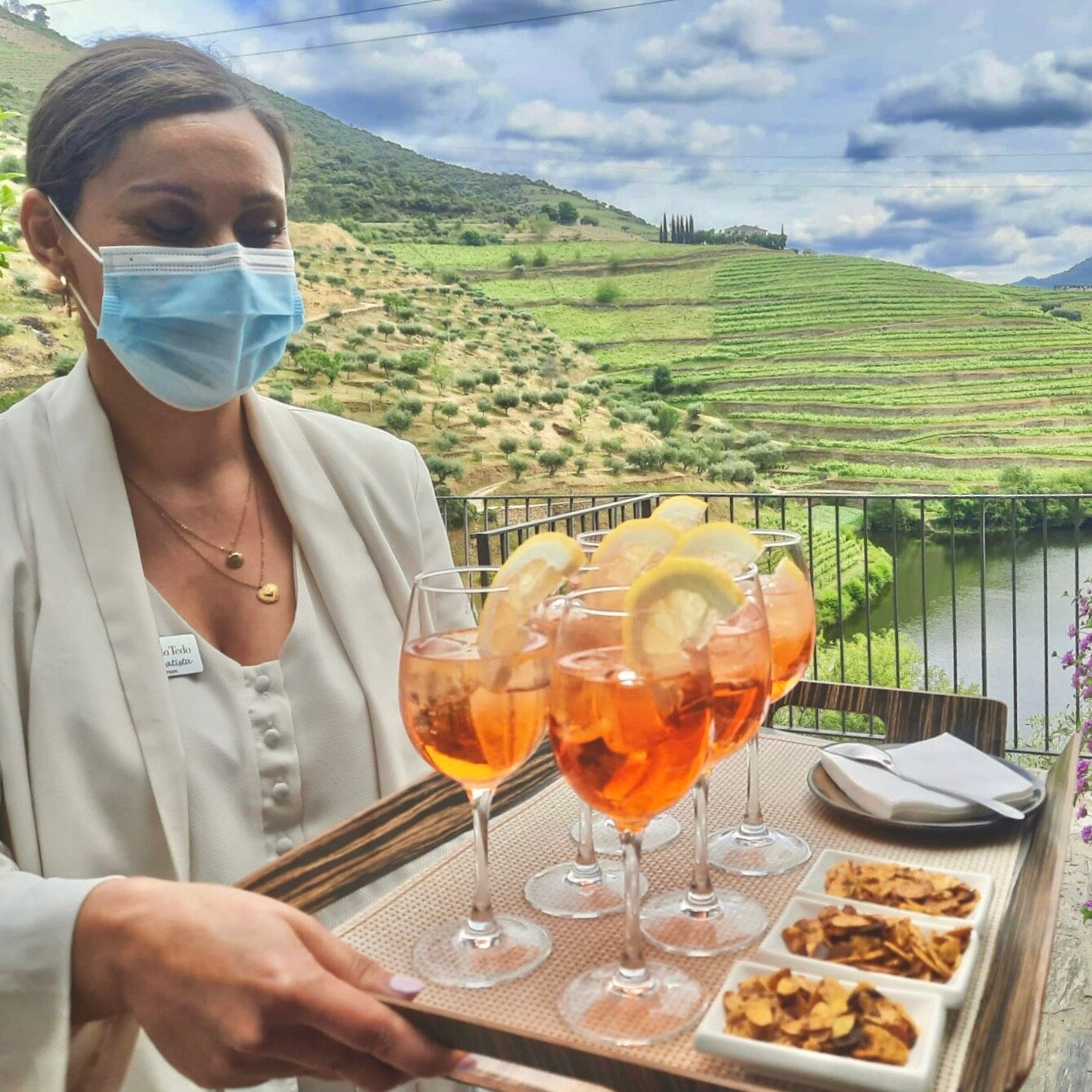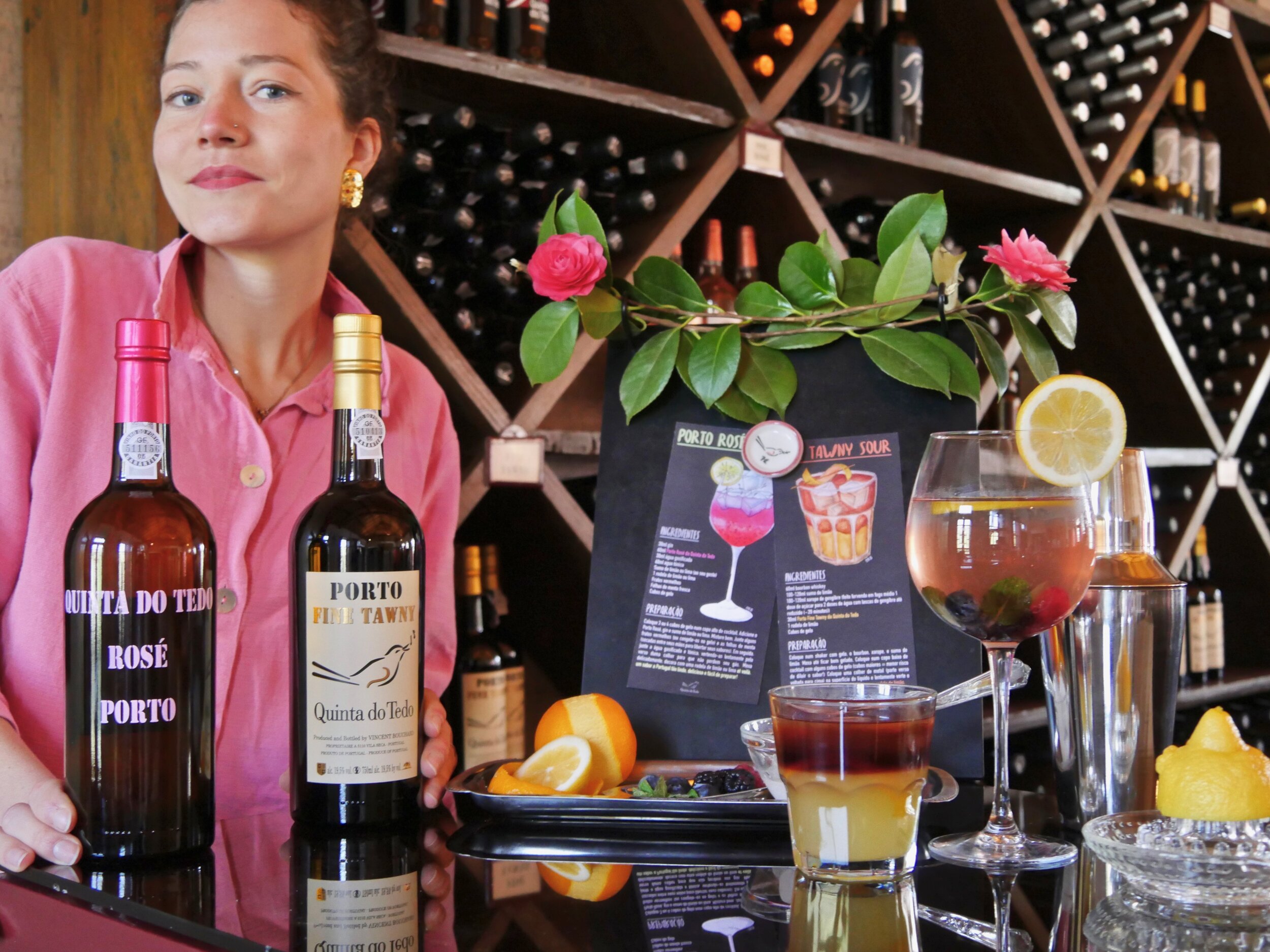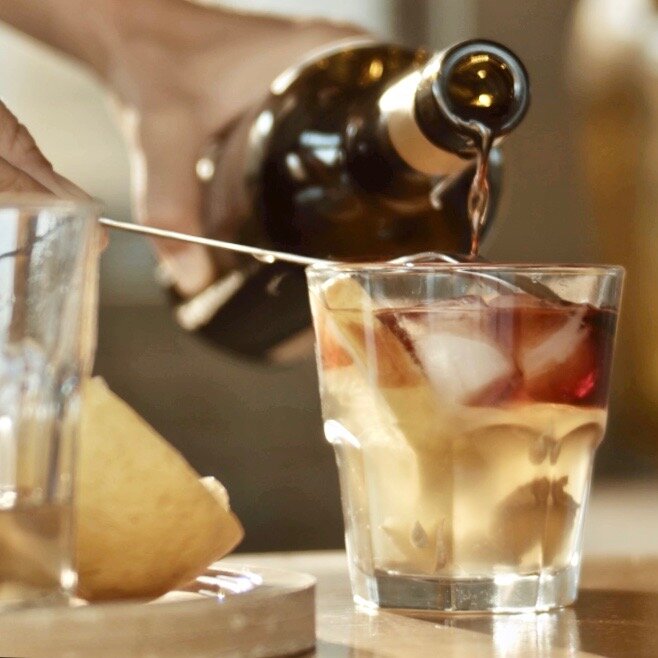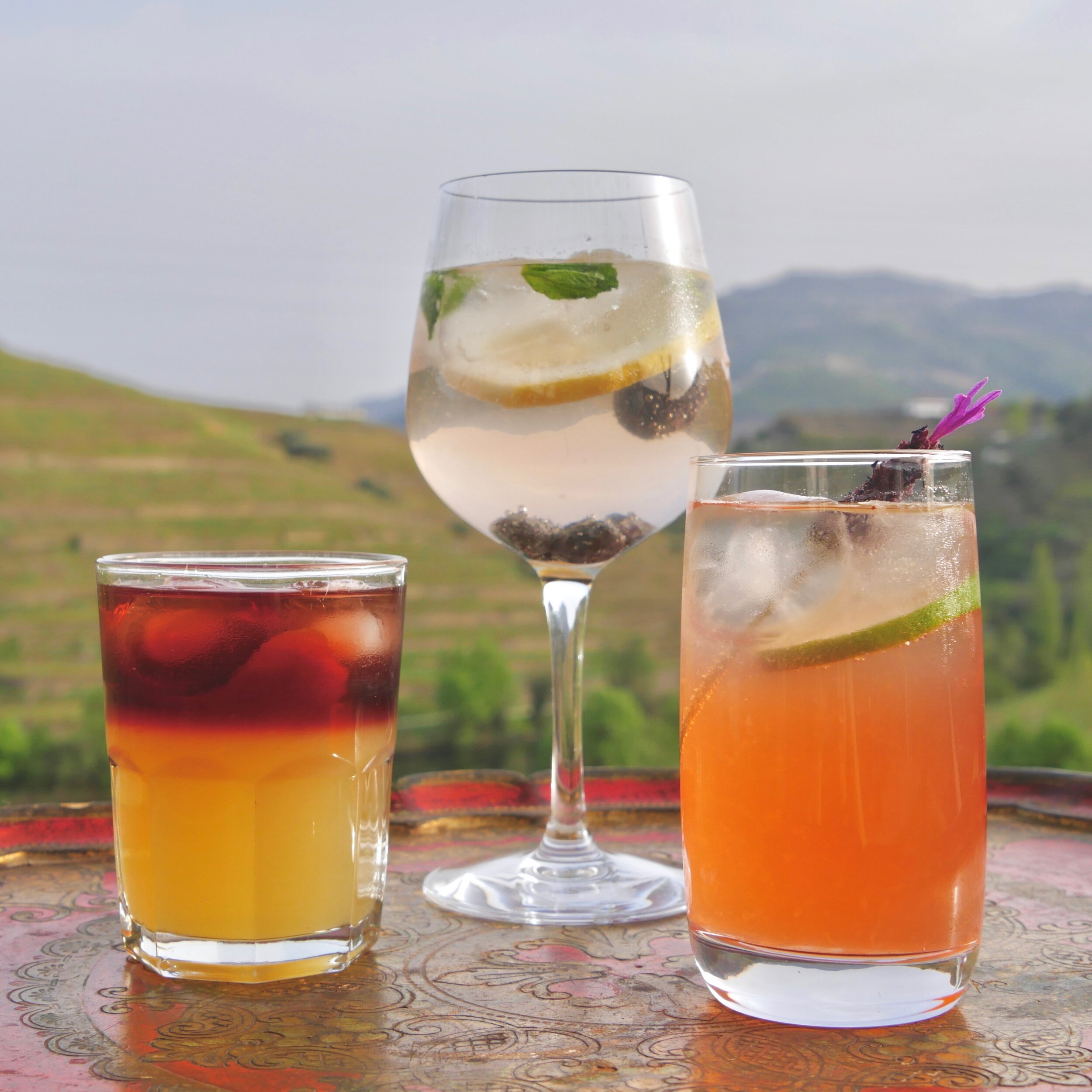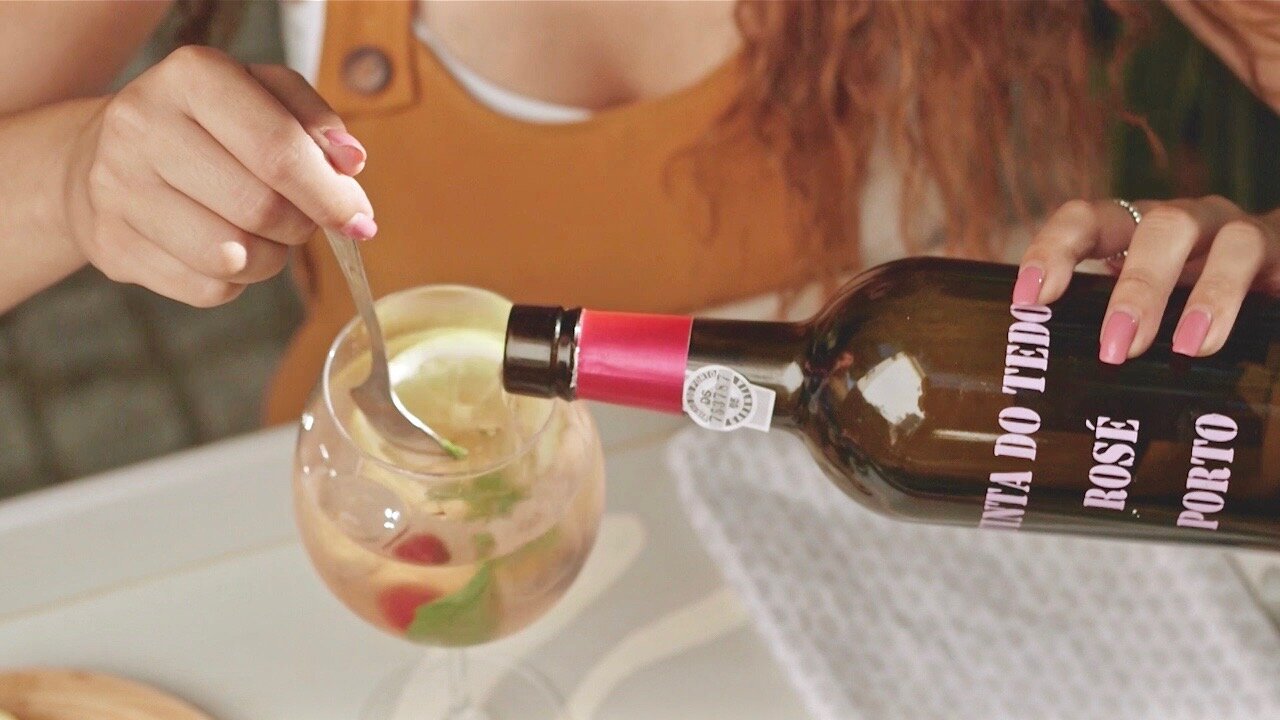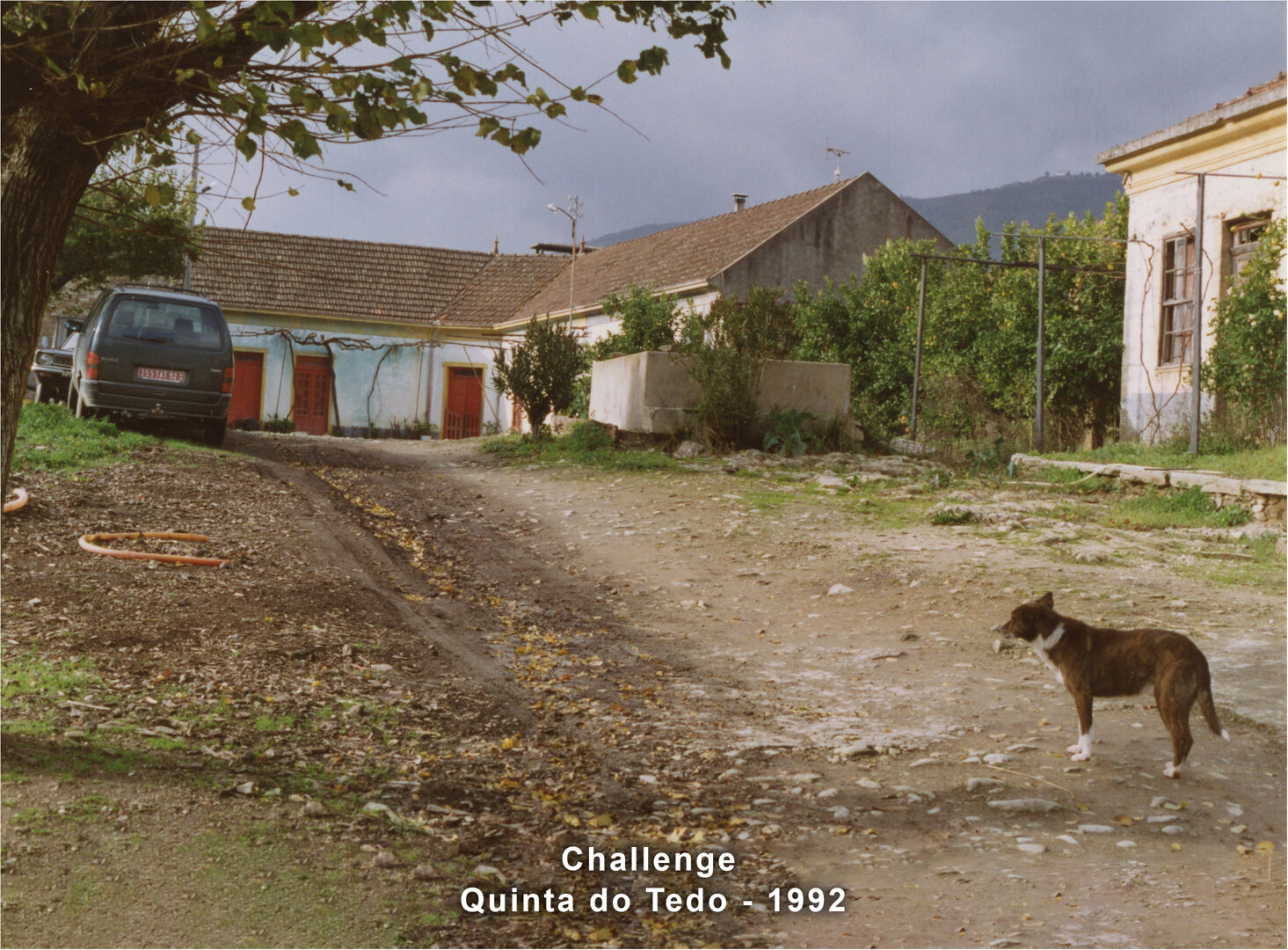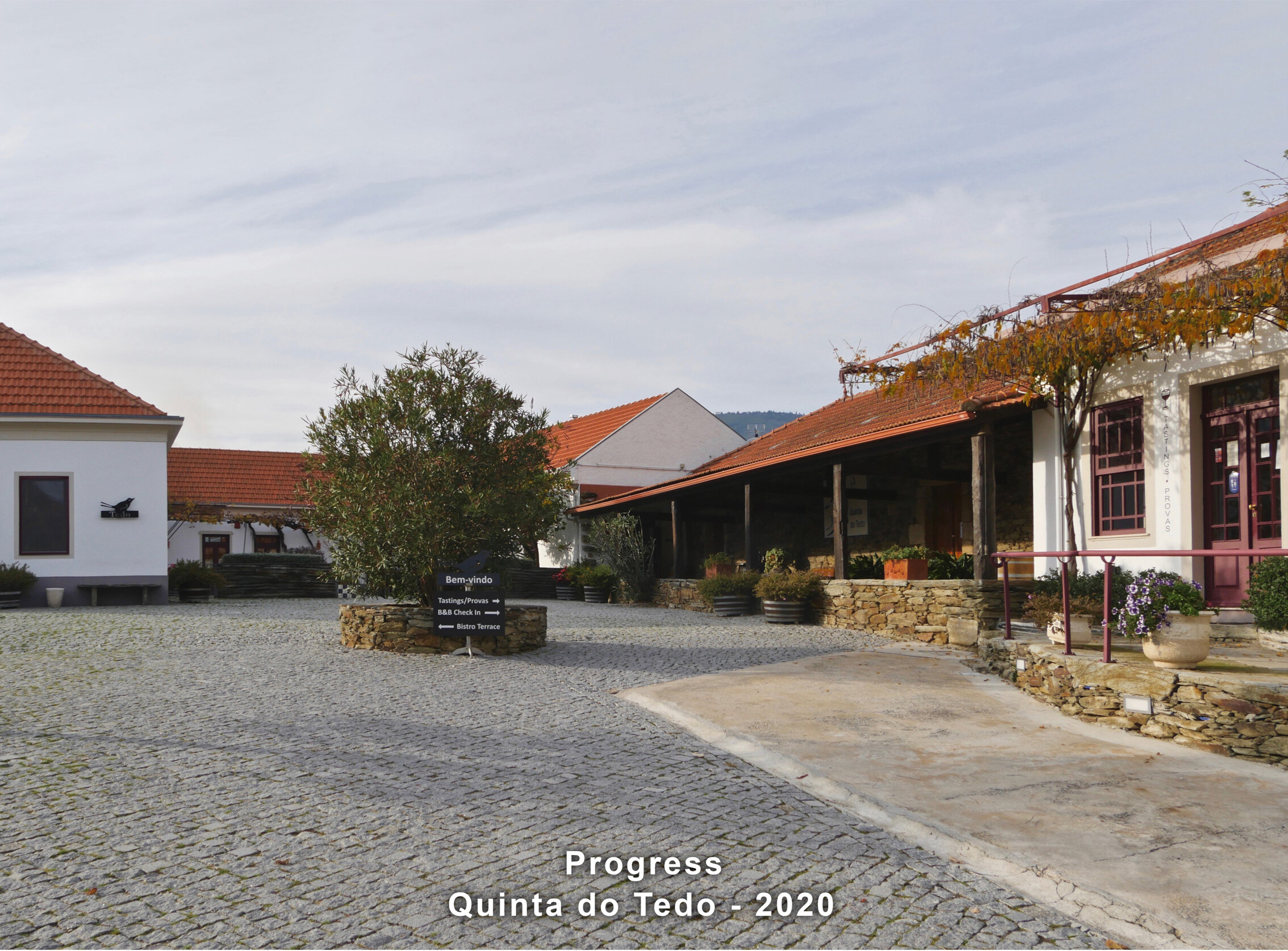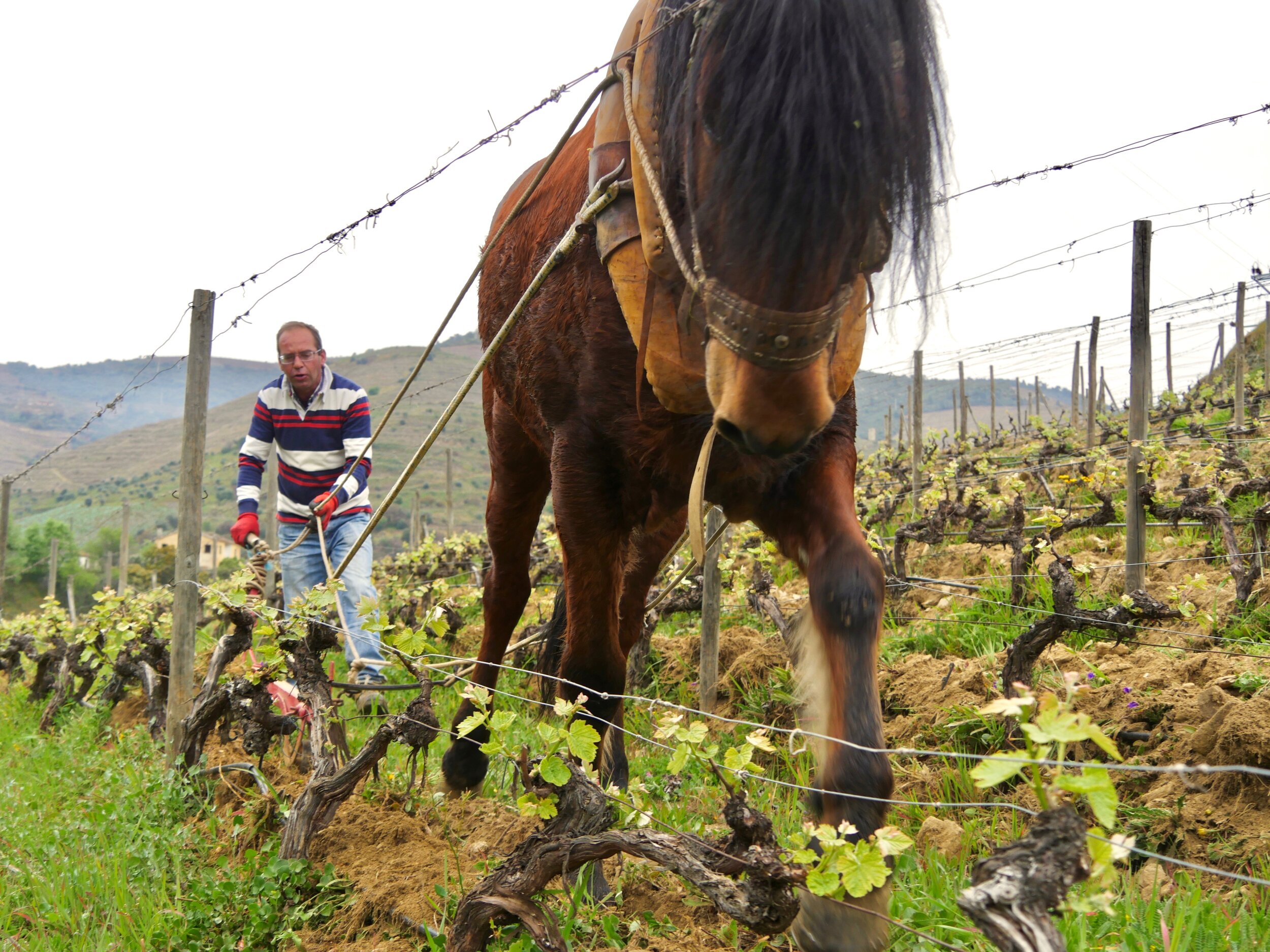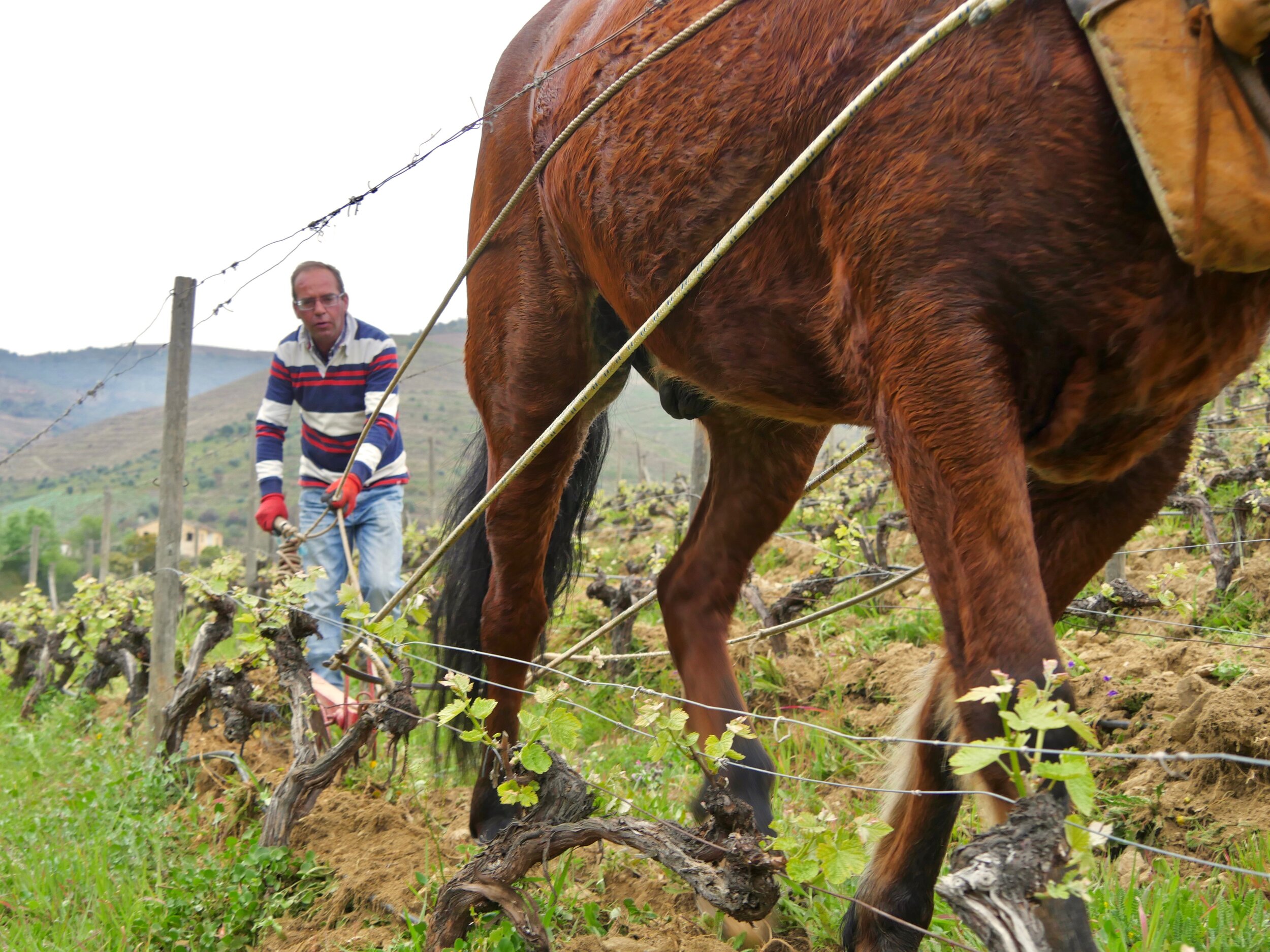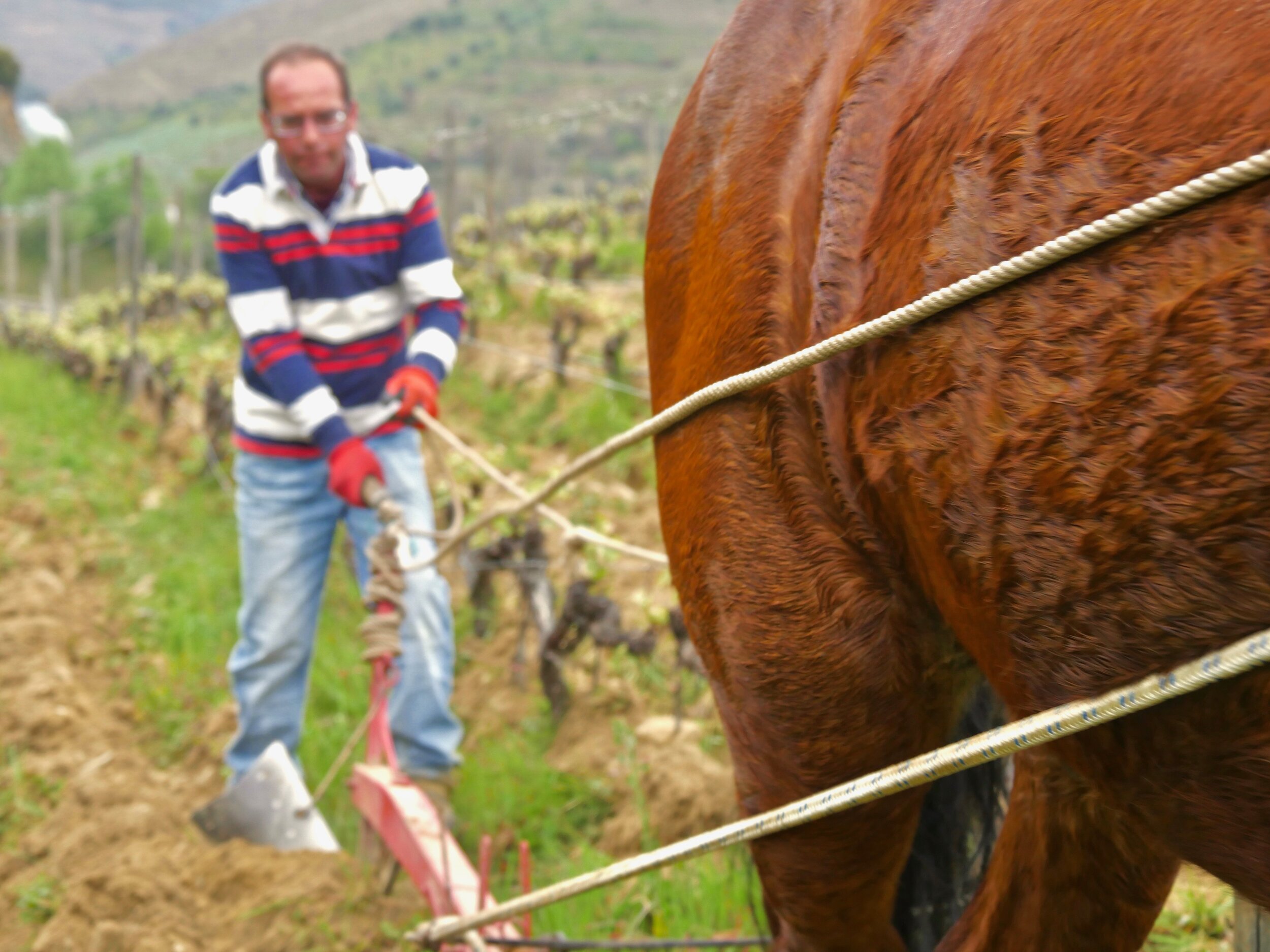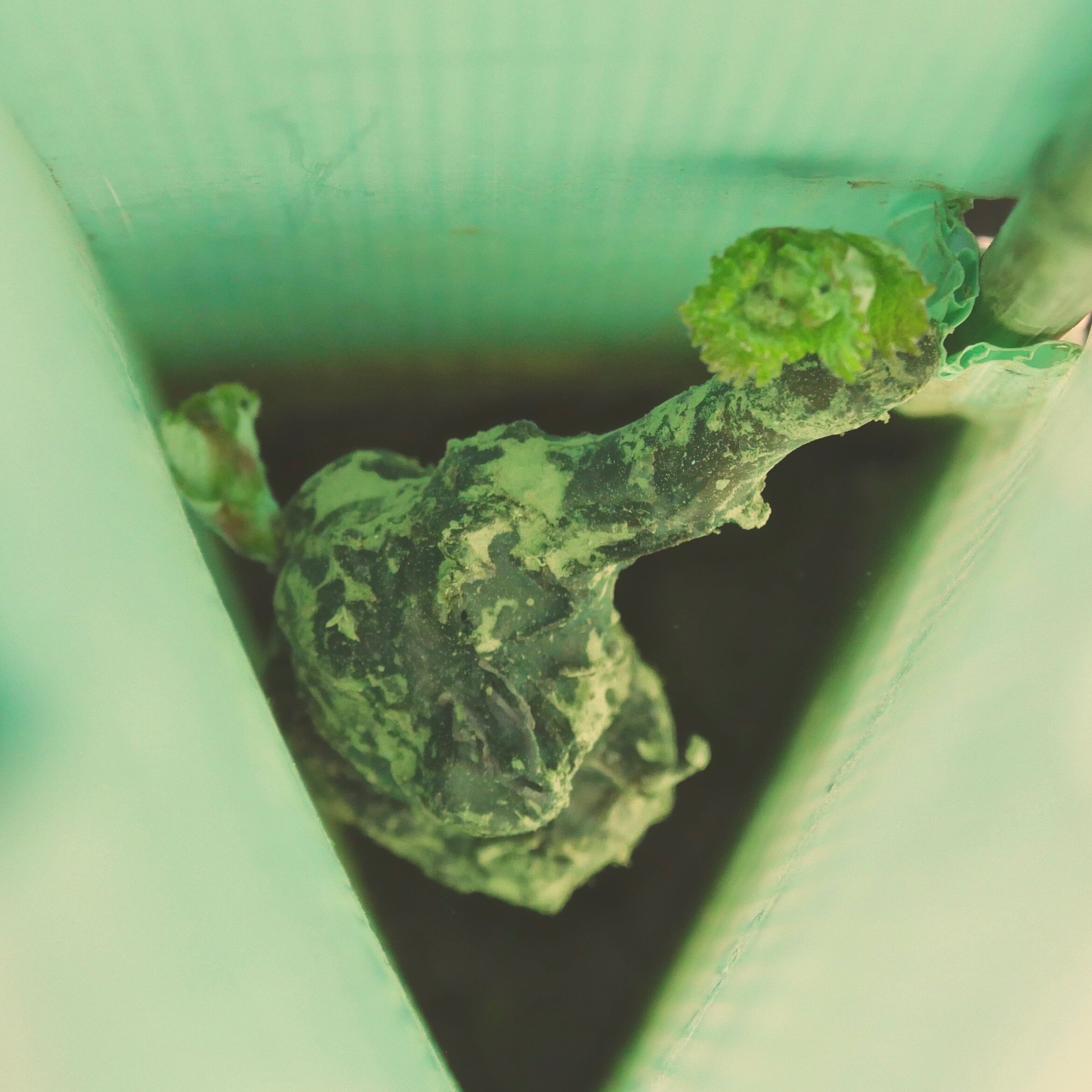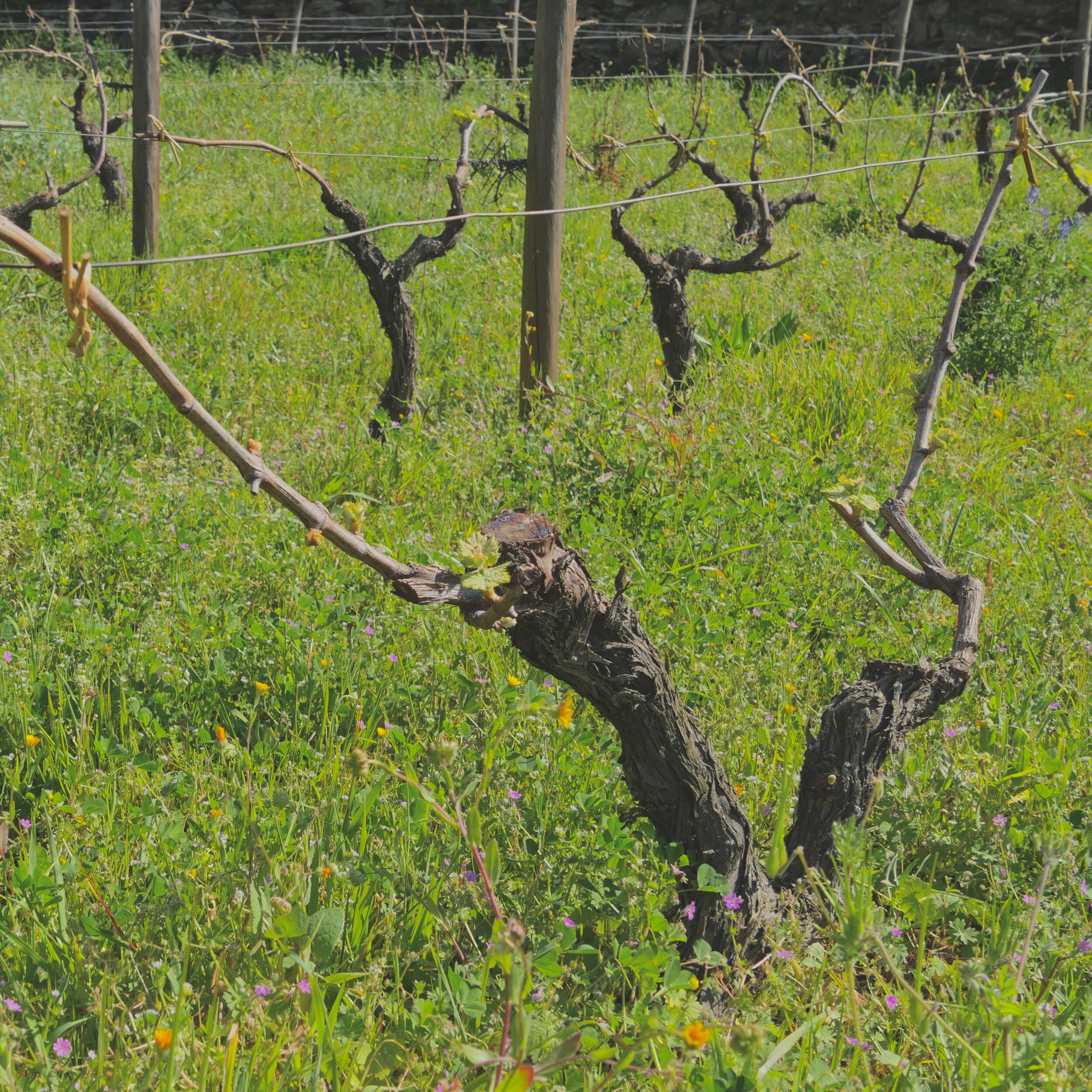On May 13th, World Cocktail Day, we launched Port Cocktail Hour every day from 18h onwards at Bistro Terrace. We refined our selection of Port cocktails for guests to enjoy on our panoramic terrace overlooking Tedo River and we haven’t stopped drinking them since!
Port is actually an extremely versatile libation that has come a long way from being limited to men’s enjoyment at the end of a meal with cheese or chocolate, as was English custom for centuries.
While we agree with traditionalists that old Tawnies, unique Colheitas, mature LBVs and rare Vintages speak best on their own, slightly chilled or with appropriate food that does not steal from their splendour, we also advocate for diverse and creative ways to drink entry-level white, rosé, and young Ruby and Tawny Ports.
Odile came up with the Porto Rosé Shrub for a virtual Port Cocktail Workshop she hosted in March.
For example, in cocktail form! Bubbles can coax out Port’s most nuanced aromas, acids can balance Port’s sweetness, and herbs and fruit can enhance Port’s fresh and fruity character.
Cocktail culture emerged in the US in the mid-1600s. Punch was the earliest, most affordable and versatile iteration of a mixed drink which groups would gather after work to sip from large, communal bowls usually served at room temperature (only the bourgeoisie could afford ice!)
Cocktailing became more individualistic from the 1800s onwards. From New York’s booming bar scene emerged the first references to “cocktails” and “bartenders”, the 2-1-1 Golden Ratio (2 parts booze to 1 part souring agent to 1 part sweetener) and the first guide to cocktail making, published in 1862.
Jerry Thomas, New York’s godfather of mixology who published the first guide to cocktail making.
In the early 1900s, prohibition sent cocktails underground where barmen experimented with sours by which a very strong acid component was used to cover up the harsh flavour and questionable integrity of illegal spirits. Quinta do Tedo’s Fine Tawny Sour uses Meyer lemons from our estate to lend a more delicate citrus kick that elegantly contrasts rather than overpowers the sweet Port.
Between the 1600s and 1900s, the cocktail trend took off outside the US and evolved across the world, especially in England, where the tangy shrub was born from a base concoction of vitamin-rich fruit preserved in vinegar that was used to treat scurvy on ships in the 1400s. Americans adapted this recipe in the 1800s. They strained the fruit from the vinegar, which was mixed with a sweetener and sparkling water in a refreshing soft-drink or cocktail (like Quinta do Tedo’s Porto Rosé Strawberry Shrub).
English troops in India taking their daily dose of Quinine to prevent malaria.
The English also introduced the classic gin and tonic from India in the 1800s. Quinine, an extract from cinchona bark that helped treat widespread malaria, gives tonic water its bitter taste which English officers found too intense. They added gin (and eventually sugar and lemon) to make it more palatable.
Replace gin with white Port, and you get a Port Tonic. This more modern English creation from the 1900s has become Porto’s version of Venice’s Aperol Spritz. It introduced youth to a fresh and light way of consuming what was otherwise seen as a traditional drink reserved for grandparents and Christmas celebrations.
We drink Port Tonics at any time and in any place (beaches, bars, festivals, nightclubs, and before, during and after meals); they’re refreshing, low in alcohol, naturally sweet and pack a lot of flavour!
Joseph stopped by our urban tasting room in Régua for a refreshing Porto Rosé Tonic after a long bike ride!
Hundred of other kinds of Port cocktails have followed the Port Tonic. Port need not be tampered with too much, nor mixed with too many ingredients to create an easy, elegant and certified crowd-pleasing cocktail. Now, let’s get mixing Quinta do Tedo’s favourites!
The Porto Rosé Tonic is easy, clean and timeless.
Mix 2 parts Porto Rosé with 1 part Gin and a squeeze of lime or lemon in a balloon or wine glass (the wide bowl helps release the Porto Rosé’s delicate aromas).
Add some berries and macerate if you’d like to extract more of their colour and flavour. If you don’t have fresh or frozen berries you can use jam!
Smack a few mint leaves between your hands to release their full aromatic potential and drop them into the glass with a few large ice cubes (which melt slower and won’t dilute your cocktail flavours so fast).
Fill the glass with 3 parts tonic (or 2 parts tonic and 1 part sparkling water, if you like it less sweet) and give it a gentle stir.
Garnish with a slice of lime and voilà, enjoy!
The Fine Tawny Sour is rich, balanced and intense.
Mix 2 parts lemon juice with 2 parts simple syrup and 1 part Whisky in your shaker with ice and strain into your old-fashioned or short water glass.
Plop in a large ice cube and a strip of lemon or orange peel.
Hover a bar spoon over the liquid (make sure it’s touching the surface!) and slowly pour 1 part Port over its back.
The layering technique:
The dense simple syrup and cold temperature of the base mixture are crucial to achieving a successful layering effect by which the Port floats on the surface of the cocktail.
The simple syrup:
Simple syrup is normally equal parts sugar to water, but we cook down 2 parts water to 1 part sugar with fresh ginger for 20 minutes until thick to give the syrup a richer, more caramelized flavour infused with ginger.
Try infusing your simple syrup with other flavours (cardamom, cinnamon, peppercorns, tea, citrus rind, fruits… the sky's the limit!)
The Porto Rosé Strawberry Shrub is tangy, fruity and uses pantry essentials:
Macerate equal parts white sugar and strawberries (or any fresh or frozen berries) with lemon zest for a few hours.
Macerate a few lavender sprigs in white wine vinegar for a few hours.
Drain the fruit solids from the berry syrup (you can spoon the berries over ice cream for dessert!) and the lavender from the vinegar.
Whisk 1 part lavender vinegar into 1 part strawberry-lemon syrup.
Store the shrub in the fridge for up to a month (it also makes for a refreshing non-alcoholic drink when mixed with sparkling water!)
Combine 2 parts Rosé Port with 4 parts bubbles (tonic or sparkling water) and 1 part shrub into your highball or tall water glass.
Fill the glass with ice cubes and garnish with a slice of lime and lavender sprig.
The Porto Rosé Strawberry Shrub, the newest addition to list of cocktails served at Bistro Terrace, is juicy, tart and can be made with any seasonal fruit substitute to strawberries!
These sunnier, warmer, longer days call for fun and fresh libations; we highly suggest you stock up on your Port stash and discover new ways to enjoy this special product with friends and family this summer.
Share your favourite Port cocktail recipes and photos with us by tagging @quintadotedo on Instagram or sending them to odile@quintadotedo. Quinta do Tedo will feature your recipes on social media and, perhaps, at Bistro Terrace this summer.
Our Tedo Super Fan from Calistoga, California, Gretchen De Lemur, shared with us her recipe for a clean, light and refreshing Porto Rosé Pomegranate Sparkler. Give it a try!
60 ml pomegranate juice
60 ml Meyer lemon juice
30 ml vodka
90 ml Quinta do Tedo Porto Rosé
120 ml sparkling water
5 ml orange bitters
6 “spanked” mint leaves
1 slice of Meyer lemon (or blood orange or fresh pomegranate seeds)
Remember, the greatest cocktails are simply made from a balanced amount of good quality ingredients that pair well together.
Happy Port cocktailing and bom proveito you all!


